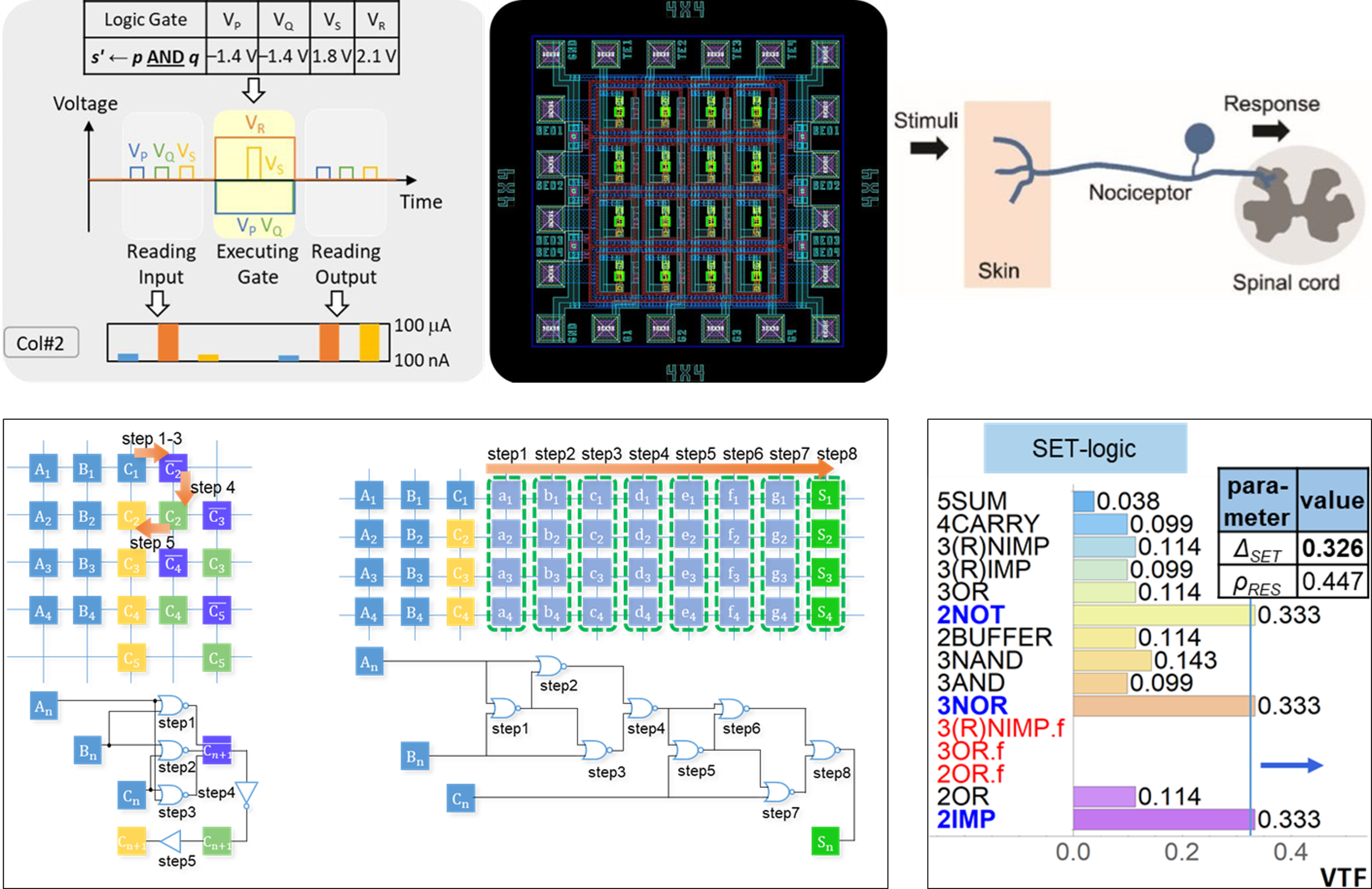Emerging Memristive Devices

In the semiconductor industry, devices scaling has been the most important issue to improve computing performance. However, as the conventional scaling technology of the CMOS transistor becomes closer to the limit, scaling alone can not satisfy the future requirement. It is becoming increasingly important to find new devices that can overcome existing limitations.
Memristor is one of the most promising candidates to meet those needs. Memristor has advantages such as scalability, nonvolatility, multiple states, 3d stackability, and CMOS compatibility. We use memristor to develop devices that will satisfy the future computing paradigm.
1) Emerging memory
RRAM or ReRAM (Resistive Random-Access Memory) is a type of non-volatile memory, which works by changing the resistance across dielectric solid-sate material referred to as a memristor. Because it has fast operation speed and is possible to be integrated in a crossbar array, RRAM has been considered as next generation non-volatile memory. We are studying RRAM for an alternative to NAND Flash memroy, and also for emerging memory.
2) Logic-in-Memory device
Memristor offers a promising logic-in-memory(LIM) functionality to achieve the futuristic in-memory computing machine, which may solve the problem of the “von Neumann bottleneck” in the conventional computer architecture. LIM device can eliminate the distinction between CPU and memory. As a result, it makes possible to reduce energy consumption dramatically corresponding to data transfer between CPU and memory.
3) Neuromorphic device
Von Neumann Architecture is the structure of current modern computer. And this modern computer has two main parts for processing data; CPU and memory. The sequential execution process of a typical computer makes a bottleneck problem. To overcome this, non-Von Neumann architecture such as neuromorphic architecture is being studied, which works in a similar manner to the human brain.

